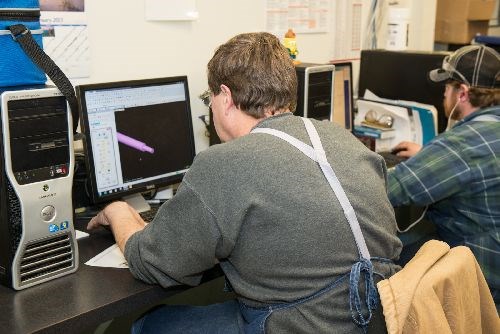Sustainability vs. Growth
Sales volume is not the metric by which Harbec measures its progress; sustainability is. At Harbec success and sustainability are synonymous, and it is an outlook that permeates every aspect of this business. Harbec is evidence that manufacturing can be clean and environmentally friendly, and that computers and CAM systems are a toolmaker’s best friends.

Sales volume is not the metric by which Harbec measures its progress; sustainability is. At Harbec success and sustainability are synonymous, and it is an outlook that permeates every aspect of this business. Harbec is evidence that manufacturing can be clean and environmentally friendly, and that computers and CAM systems are a toolmaker’s best friends.
Harbec (which is featured in MMT's January issue) is a vertically integrated company located in Ontario, NY, with three core profit centers: CNC manufacturing of 3D prototype parts, development of tooling for and production of injection molded prototypes, and production molding.
Harbec's president, Bob Bechtold says, “I don’t want to measure the success of the business by some percentage growth goal. Growing 25 percent a year is not a sustainable model. We aren’t perfect at it yet, but we are making good progress. It’s all about doing more with less. We try to grow the business profitability annually and whether or not our sales grow is not as important.”
Sustainability also has to do with producing goods in a responsible way that will not ultimately detract from future generations’ ability to operate in a similar fashion. This definition of sustainability extends beyond the company’s manufacturing practices to environmental stewardship as well.
Just a few of the feathers in Harbec's sustainability cap include:
• Striving toward carbon neutrality (with a projected realization of the goal in 2014).
• Low noise generating all-electric molding presses.
• Bright, energy efficient lighting with daylighting from skylights.
• Electricity generated on-site via two wind turbines.
• Water conservation and re-use, saving over one million gallons of city water per year by utilizing an 800K-gallon reservoir to capture and hold rain water. Prior to cooling use, this water passes through a heat exchanger at the bottom of the pond to reduce the energy and water used to meet total cooling requirements.
• Energy efficient equipment reducing energy costs up to 50 percent.
• 100% green fleet with energy efficient battery assisted vehicles.
• Recipient 2011 “MEP Excellence in Sustainability Award” from National Institute of Standards and Technology (NIST).
Related Content
-
Embracing ESG: One Mold Builder's Path to Sustainability and Success
The story of how a company in the moldmaking, injection molding and metal parts industry is navigating the challenges and opportunities associated with sustainability.
-
Innovative Mold Building Enhances Packaging Material Efficiency, Elevates Recyclable Design
A manufacturing-focused design and optimized tooling enhance material efficiency in packaging for a new medical instrument.
-
MMT Chats: Project Engineer Applies Lean Manufacturing Principles to Growing Sustainability Role
MoldMaking Technology Editorial Director Christina Fuges catches up with MMT’s 30-Under-30 Honoree Katherine Pistorius, who has added Regional Sustainability Coordinator alongside her Project Engineer duties, which demonstrates the many paths one can take in a manufacturing career. Here she shares how this opportunity unfolded for her and what the job entails today and in the future. This episode is brought to you by ISCAR with New Ideas for Machining Intelligently.















